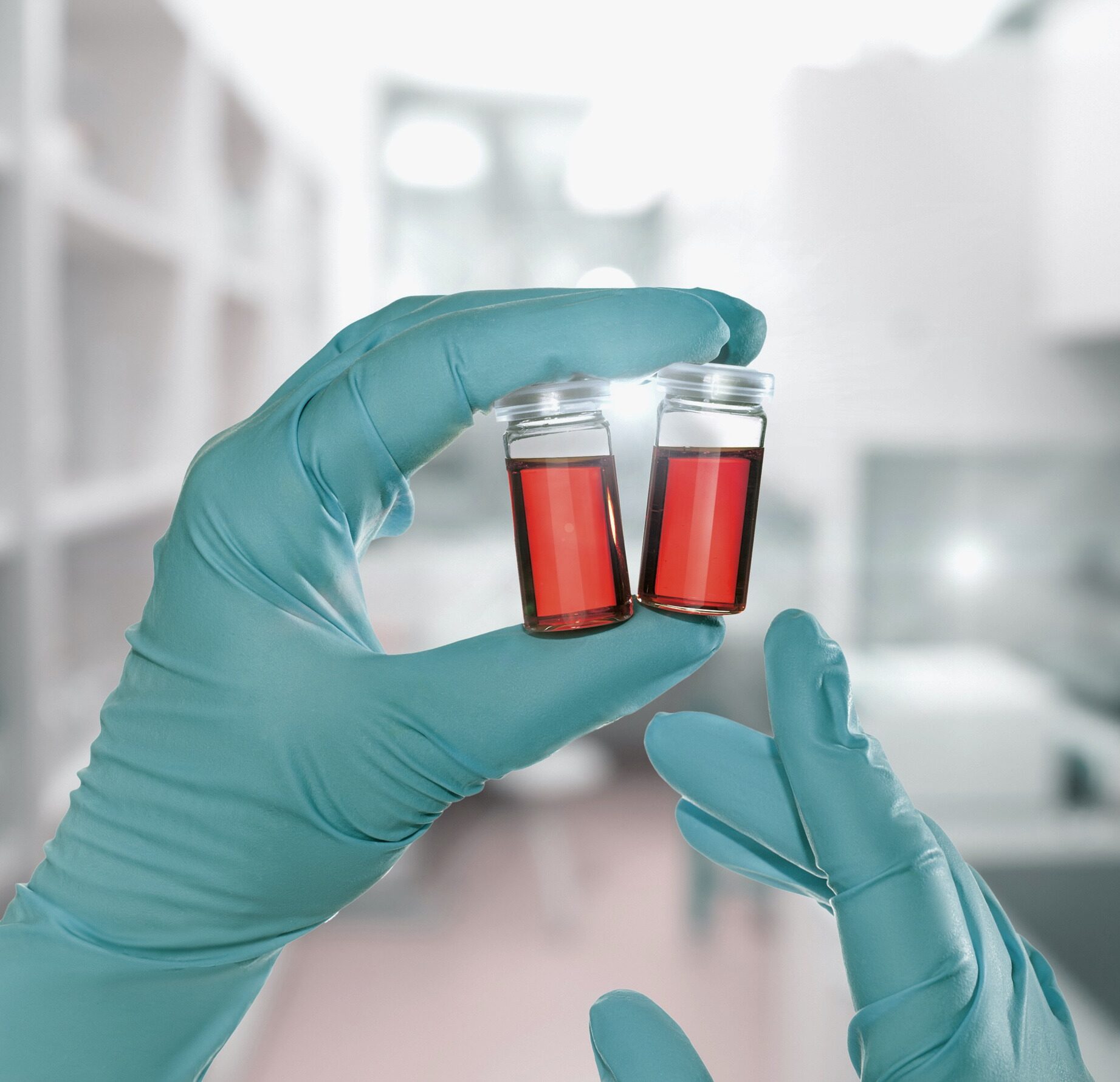The Chemicals and Toxins That Harm You Every Day Aetas Protocols
Toxins and harmful chemicals are unfortunately common in our daily lives, and we are becoming increasingly aware of the harm these substances can cause even in small amounts. These invisible threats are not confined to specific locations; they exist in our food, surround us in our natural and man-made environments, and even infiltrate our homes. Glyphosate in our food, PFAS in drinking water, lead in car exhaust fumes, and BPA and bisphenols in plastics are just a few examples of toxic substances that can harm you.

Your to-go coffee cup, your frying pan, and your tap water can harm you
Over the past 100 years, our environment has become increasingly polluted, and every day we are exposed to hundreds of toxins, resulting in greater toxic burdens than ever before. When you sip from your to-go coffee cup, cook food on your favourite non-stick pan, or simply take a sip of cool tap water, you may not be aware of the potential health risks lurking right in front of you. Chemicals and toxins integrated into the materials around us pose a hidden danger that affects our health. Some of the most common chemicals we encounter in everyday life include PFAS, BPA, parabens, phthalates, MTBE, and Glyphosate. The thresholds for when these substances are harmful to humans have been underestimated for many years, perhaps even downplayed, but today we know much more about the harm they can actually cause, even at very low levels. This should give cause for thought when official institutions set new levels up to 20,000 times lower for some chemicals without much attention from the media.
Forever Chemicals
Per- and polyfluoroalkyl substances (PFAS) have been a part of human life since the 1950s with properties such as stain resistance, water repellency, and non-stick surfaces. However, their impact on human health is serious, as these synthetic chemicals are carcinogenic, hormone-disrupting, and environmental pollutants.
With their robust carbon-fluorine bonds, PFAS constitute one of the most stable compounds in organic chemistry. This makes them resistant to breakdown, both during use and in environmental contexts. Their ability to easily travel long distances from their sources increases their widespread presence in the environment – in soil, water, air, and food. PFAS are released into the environment through industrial processes not directly related to food production, as well as through the use and disposal of products containing PFAS. The consequence of this is that they end up in our food, as is the case with many other persistent pollutants. The main sources include vegetables grown near contaminated areas, but also drinking water is a critical source. Some PFAS also accumulate in the human body through fish and seafood, meat, eggs, milk, and dairy products. We are exposed to them every day at home, at our workplaces, and through the environment, such as the food we eat, drinking water, and the use of cosmetics, clothing, and non-stick pans.
The majority of PFAS compounds are persistent in the environment, meaning that people and other living organisms will experience increasing concentrations of PFAS as the compounds continue to be released into the environment. Even if all PFAS emissions were to cease tomorrow, they would still persist in the environment and in people for generations, which is why these chemicals are also called forever chemicals. The serious health effects of PFAS include cancer1Steenland, K., & Winquist, A. (2021). PFAS and cancer, a scoping review of the epidemiologic evidence. Environmental Research, 194, 110690., hormonal and endocrine disruptions2Mokra K. (2021). Endocrine Disruptor Potential of Short- and Long-Chain Perfluoroalkyl Substances (PFASs)-A Synthesis of Current Knowledge with Proposal of Molecular Mechanism. International journal of molecular sciences, 22(4), 2148., and birth defects during pregnancy3Szilagyi, J. T., Avula, V., & Fry, R. C. (2020). Perfluoroalkyl Substances (PFAS) and Their Effects on the Placenta, Pregnancy, and Child Development: a Potential Mechanistic Role for Placental Peroxisome Proliferator-Activated Receptors (PPARs). Current environmental health reports, 7(3), 222–230..
BPA – One of the Most Produced Chemicals Globally
Over the past two decades, the understanding of the effects of Bisphenol A (BPA) has significantly expanded. The large body of available evidence is robust, and the conclusion is unequivocal: even small amounts of BPA can impact our organs and are associated with a wide range of diseases. The European Food Safety Authority (EFSA) has established new limits for Bisphenol A based on the latest scientific literature. The safe intake limit for Bisphenol A is set at a maximum of 0.2 nanograms per kilogram of body weight per day. This limit is 20,000 times lower than the previous standard, which was a maximum of 4 micrograms per kilogram of body weight per day4European Food Safety Authority. (2023). PLS: Re-evaluation of the risks to public health related to the presence of bisphenol A (BPA) in foodstuffs. European Food Safety Authority.. Furthermore, EFSA has examined various scenarios showing that both individuals with average and high intake of the substance will significantly exceed the new limit and potentially be exposed to health risks.
These health risks include cancer5,Khan, N. G., Correia, J., Adiga, D., Rai, P. S., Dsouza, H. S., Chakrabarty, S., & Kabekkodu, S. P. (2021). A comprehensive review on the carcinogenic potential of bisphenol A: clues and evidence. Environmental science and pollution research international, 28(16), 19643–19663.6Dumitrascu, M. C., Mareș, C., Petca, R., Sandru, F., Popescu, R., Mehedintu, C., & Petca, A. (2020). Carcinogenic effects of bisphenol A in breast and ovarian cancers (Review). Oncology Letters, 20(6), 1., immune system disturbances7Xu, J., Huang, G., & Guo, T. L. (2016). Developmental Bisphenol A Exposure Modulates Immune-Related Diseases. Toxics, 4(4), 23., neurological problems8Akash, M. S. H., Haq, M. E. U., Sharif, H., & Rehman, K. (2021). Bisphenol A and Neurological Disorders: From Exposure to Preventive Interventions. In Emerging contaminants and associated treatment technologies (pp. 185–200)., and a decrease in sperm count9Santiago, J., Silva, J. V., Santos, M. a. S., & Fardilha, M. (2021). Fighting Bisphenol A-Induced Male Infertility: The power of antioxidants. Antioxidants, 10(2), 289., among others. Therefore, it is essential to address the widespread presence of harmful chemicals in our daily lives and reduce exposure.
It’s worth noting that BPA is just one of several different bisphenols. Others like BPS, BPF, and BPAF have been assessed to exhibit similar problematic properties. So even if something is labeled as BPA-free, it may not necessarily be free of bisphenols.
The chemical exists in various forms as a building block in the plastic type called polycarbonate, which is clear, hard plastic used in various everyday products, including water bottles, toys, phones, bottle caps, to-go coffee cups, plastic containers, and baby bottles.
Phthalates
Phthalates constitute a group of synthetic chemicals found in many plastic products to make plastic more flexible, durable, and malleable. Phthalates are also used in a wide range of products, including cosmetics, perfumes, household products, medical devices, and certain types of food packaging. Due to their widespread use, phthalates are found almost everywhere in our environment. Although phthalates have been indispensable in many industries due to their technical properties, there is now significant concern about their harmful effects on humans. Exposure to phthalates is known to have negative effects on development, including increased prenatal mortality, reduced growth, and birth weight. Additionally, a link has been found between phthalates and conditions such as endometriosis, reduced testosterone, ADHD, type 2 diabetes, and breast cancer10,Wang, Y., & Qian, H. (2021). Phthalates and Their Impacts on Human Health. Healthcare (Basel, Switzerland), 9(5), 603.11Eales, J., Bethel, A., Galloway, T. S., Hopkinson, P., Morrissey, K., Short, R. L., & Garside, R. (2022). Human health impacts of exposure to phthalate plasticizers: An overview of reviews. Environment International, 158, 106903..
It’s important to note that not all phthalates are the same, and some have been assessed as less harmful than others. Previously, some of the most commonly used phthalates, such as DEHP (Di(2-ethylhexyl) phthalate), DBP (Dibutyl phthalate), DiBP (Diisobutyl phthalate), and BBP (Butyl benzyl phthalate), were considered harmful to reproductive capacity and are now banned in most productions. However, many other phthalates remain on the candidate list of particularly problematic substances and are still allowed in many countries including Denmark.
Preservatives in Your Beauty Products
Parabens are a group of synthetic chemicals introduced in the mid-20th century. Since then, they have been included in many cosmetic and personal care products because they can prevent the growth of harmful microorganisms. Parabens are often found under various names such as methylparaben, ethylparaben, propylparaben, and butylparaben. Parabens are endocrine-disrupting chemicals as they mimic the female sex hormone estrogen, thereby disrupting hormone balance in the body. Some studies have also found a possible link between parabens and certain health issues, including reproduction, breast cancer, and allergic reactions12,Shimizu, Y., Kambayashi, Y., Tsujiguchi, H., Hara, A., Hori, D., Nguyen, T. T. T., Suzuki, F., Hamagishi, T., Yamada, Y., Nakamura, H., Yoshikawa, T., Hayashi, K., Hibino, Y., Shibata, A., Fukutomi, Y., Ohya, Y., Yamamoto-Hanada, K., Muto, G., Hirota, R., . . . Nakamura, H. (2018). Relationship between the Use of Parabens and Allergic Diseases in Japanese Adults—A Cross-Sectional Study. J, 1(1), 148–158.13Pan, S., Yuan, C., Tagmount, A., Rudel, R. A., Ackerman, J. M., Yaswen, P., Vulpe, C. D., & Leitman, D. C. (2016). Parabens and human epidermal growth factor receptor ligand Cross-Talk in breast cancer cells. Environmental Health Perspectives, 124(5), 563–569.. Furthermore, traces of parabens have been found in the body after repeated use of cosmetic products, raising questions about the long-term effects they may have on the body. It is recommended to avoid parabens by choosing products labeled as “paraben-free” and carefully reading the ingredient lists to identify and avoid parabens.
MTBE in Gasoline
MTBE, also known as Methyl tert-butyl ether, is a chemical compound that was formerly used as an additive in gasoline to improve its octane rating and thereby reduce air pollution. MTBE has proven to be harmful to health. If gasoline containing MTBE spills or leaks into the ground, MTBE can easily migrate into groundwater and contaminate drinking water sources. This has led to groundwater pollution and water quality issues, prompting restrictions and bans on MTBE in various places. MTBE is also used in small quantities as a laboratory solvent and for some medical purposes. MTBE is not officially classified as a carcinogenic substance yet, but there is evidence suggesting its carcinogenicity.
Glyphosate – The Most Used and Controversial Pesticide in the World
Glyphosate is the active ingredient in many pesticides, also known as herbicides. Glyphosate was first introduced in 1974, known as Roundup, and has become one of the most widely used pesticides in the world due to its effectiveness and broad-spectrum action.
There has been significant concern and controversy surrounding glyphosate regarding its potential health effects. One of the claims is that glyphosate may be carcinogenic. In 2015, the World Health Organization (WHO) concluded that glyphosate is probably carcinogenic to humans. This led to concerns, tightened regulatory limits, and lawsuits against manufacturers of glyphosate-based herbicides. Concerns that we now know should be taken seriously. Glyphosate has been investigated for its role in various health problems, including hormone disruption, immune system disturbances, and neurodegenerative diseases14Winstone, J. K., Pathak, K. V., Winslow, W., Piras, I. S., White, J. A., Sharma, R., Huentelman, M. J., Pirrotte, P., & Velazquez, R. (2022). Glyphosate infiltrates the brain and increases pro-inflammatory cytokine TNFα: implications for neurodegenerative disorders. Journal of Neuroinflammation, 19(1)..
Finding unequivocal studies on the connection between glyphosate and its harmful effects on humans is challenging for several reasons. One of the primary factors is the influence of the chemical industry on research. Many studies on glyphosate are either directly funded by companies that produce it or have close ties to the industry. This creates a potential conflict of interest where there is an incentive to present results in a way that supports the safety of the product. Results that do not align with desired outcomes may be hidden or not published (referred to as null-results), creating a biased representation of the overall scientific literature. This means that many available studies on glyphosate are influenced by conflicts of interest and lack transparency.
We know for certain that pesticides are harmful to humans, and long-term exposure, even in small amounts, can lead to life-threatening consequences. In one study, researchers reviewed the research literature on glyphosate and the biological processes associated with cancer15Samsel, A., & Seneff, S. (2015). Glyphosate, pathways to modern diseases IV: cancer and related pathologies. Journal of Biological Physics and Chemistry, 15(3), 121–159.. They found evidence that glyphosate contributes to the increasing incidence of various types of cancer in humans. The researchers conclude that the prolonged 40-year exposure to glyphosate that humanity has been subjected to can be considered a living laboratory where people have served as test subjects in real-time, and the results are extremely clear and alarming.
In addition to the harmful effects on humans, there is also significant attention on glyphosate’s impact on the environment. Glyphosate contaminates soil, waterways, and groundwater, resulting in enormous negative consequences for ecosystems and animals dependent on these areas. Several leading scientists believe that Glyphosate is one of the most, if not the most, destructive chemical for our planet and ecosystem. Glyphosate has also led to the development of resistant weed species that are difficult to control. This has resulted in increased use of glyphosate and other herbicides, which in turn has even greater environmental consequences.
To avoid pesticides, it is recommended to buy locally grown, biodynamic, or organic produce, as non-organic vegetables and fruits are sprayed with pesticides like glyphosate and therefore have a high content of the substance.
What Can You Do to Reduce Exposure?
While it’s challenging to completely avoid exposure to small doses of harmful chemicals in our environment today, there are many measures and changes to your daily routines that can help reduce exposure.
Replace Your Teflon Pans and Aluminum Cookware
Most non-stick pans are coated with a chemical compound called Teflon. Teflon contains a compound known as C8, which is harmful to both your health and the environment. According to extensive research, C8 disrupts normal hormone function16White, S. F., Fenton, S. E., & Hines, E. P. (2011). Endocrine disrupting properties of perfluorooctanoic acid. The Journal of Steroid Biochemistry and Molecular Biology, 127(1–2), 16–26. and lowers testosterone levels in men17Lopez-Espinosa, M., Mondal, D., Armstrong, B., Eskenazi, B., & Fletcher, T. (2016). Perfluoroalkyl Substances, Sex Hormones, and Insulin-like Growth Factor-1 at 6–9 Years of Age: A Cross-Sectional Analysis within the C8 Health Project. Environmental Health Perspectives, 124(8), 1269–1275.. It has also been linked to various forms of cancer and birth defects. Use stainless steel, and cast iron cookware instead.
Make Your Own Coffee
Disposable plastic cups and lids contain BPA, leading many people to switch to paper cups. However, new research shows that even paper cups are as harmful as plastic cups18Almroth, B. C., Carle, A., Blanchard, M., Molinari, F., & Bour, A. (2023). Single-use take-away cups of paper are as toxic to aquatic midge larvae as plastic cups. Environmental Pollution, 330, 121836.. Paper cups are coated with a thin layer of plastic that prevents coffee from leaking. It’s this coating that contains toxic substances. Today, the plastic lining is mostly made from bioplastics, but this can be as harmful as conventional plastic. Therefore, avoid disposable cups and choose cups made of porcelain, glass, and stainless steel.
Never Wash Plastic in the Dishwasher
BPA can leach out of plastic containers due to heat. Even when products are labeled as BPA and phthalate-free, it’s still essential to exercise caution, as alternatives to BPA can also be harmful. BPA can lead to hormonal imbalances and suppress testosterone production due to its estrogenic effect. If you need to use plastic in the kitchen, always hand wash it.
Never Microwave Plastic
Harmful chemicals from plastic are released when exposed to heat. So, never heat up your ready-made meals directly in plastic containers or reheat leftovers in plastic containers. A study on baby food containers reveals that microwaving plastic results in the release of millions upon millions of polymer particles19Hussain, K. A., Romanova, S., Okur, I., Zhang, D., Kuebler, J., Huang, X., Wang, Q., Fernandez-Ballester, L., Lu, Y. F., Schubert, M., & Li, Y. (2023). Assessing the Release of Microplastics and Nanoplastics from Plastic Containers and Reusable Food Pouches: Implications for Human Health. Environmental Science & Technology, 57(26), 9782–9792.. 1,2 billion micro plastic partciles was released during a normal microwave cycle in a standard household plastic container deemed “safe”.
Use a Water Filter
Carbon filters are the most accessible way to remove PFAS from drinking water. They are effective and can remove a significant portion of PFAS; however, they may not eliminate all types or all of it20Reducing PFAS in Drinking Water with Treatment Technologies | US EPA. (2022, November 28). US EPA.. Therefore, the first step is to find out if your drinking water is contaminated and to what extent. This can be done through a drinking water analysis test, that can be purchased at Aetas.
Avoid Canned Food, Plastic Lids, Soda Cans, and Plastic Bottles, etc.
BPA is used in coatings in some metal containers for food and beverages, jar lids, and bottle caps, as well as takeaway packaging. Many manufacturers have removed BPA from their can linings. Nevertheless, some products may still contain other types of bisphephenoles.
Buy Organic and Avoid Pesticides
Make sure to buy organic foods, especially your vegetables and fruits. Fruits that contain the most pesticides include strawberries, grapes, apples, cherries, pears, nectarines, peaches, blackberries, raspberries, and blueberries. Vegetables with high pesticide content include spinach and kale.
Look for Eco, Chemical Free and Allergy-Friendly Labels
Buy soaps, shampoos, conditioners, cosmetics, creams, including sunscreen, and detergents labeled as fragrance-free/organic/allergy-friendly/the Danish Swan labeled. Additionally, minimise your use of perfume, as long-term exposure can lead to allergies.
Avoid Inhaling Strong Chemicals
Avoid using strong cleaning agents and solvents, and do not inhale fumes and vapors from paint, machinery, etc. New studies show that fumes from shellac solvents (the hard coat nail polish that “shines so pretty”) act as nerve agents in the body and are absorbed through the nails21Zhong, L., Batterman, S., & Milando, C. W. (2018). VOC sources and exposures in nail salons: a pilot study in Michigan, USA. International Archives of Occupational and Environmental Health, 92(1), 141–153.. This should make you think twice before you go to your favourite nail salon next time.
Protecting ourselves and our loved ones from these harmful effects requires attention and action. It is an open invitation to reflect on our daily choices because they have a direct impact on our health and the environment around us. By taking necessary measures such as replacing Teflon pans, reducing the use of disposable plastics, buying organic, and being mindful of product composition, we can minimise our exposure. This requires a dedicated and conscious effort, but it is an effort worth making to optimise our own health and take responsibility for the planet we share with future generations.

KEY TAKEAWAY
Our daily lives are filled with potential threats from toxic substances that can affect our health and the environment. From PFAS in drinking water to BPA in plastics and glyphosate in food, the risks are real. It’s time for us to proactively act to protect ourselves and our loved ones from these invisible threats. By being mindful of product composition and taking the right precautions, we can reduce our exposure. It requires a dedicated effort, but it is essential for our own health and the future of our planet.
LITERATURE REFERENCES
Make your move
Optimise your health so that you live a longer and healthier life
Aetas is a clinic for precision medicine and molecular laboratory. We specialise in Longevity, evidence-based health optimization and preventive treatments.
Enquire Now








